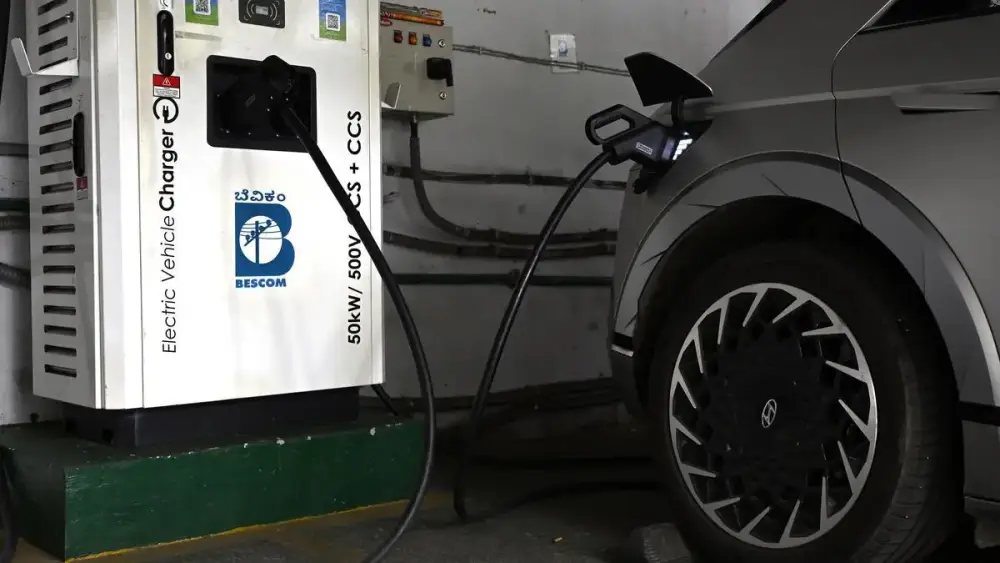📌 Dù sở hữu trữ lượng đất hiếm lớn, Ấn Độ vẫn phụ thuộc 93% vào nguồn từ Trung Quốc. Các biện pháp hạn chế xuất khẩu mới từ Bắc Kinh khiến chuỗi cung ứng ô tô và xe điện Ấn Độ tê liệt, chưa có lối thoát trong ngắn hạn. Với năng lực nội địa còn yếu và thiếu đòn bẩy chiến lược, New Delhi cần gấp rút thực hiện chiến lược đa hướng – đầu tư công nghệ, đẩy mạnh tái chế và thiết lập chuỗi cung ứng phi Trung Quốc để đảm bảo an ninh năng lượng và công nghiệp.
https://frontline.thehindu.com/economy/china-rare-earth-export-india-ev-dependence-crisis/article69783024.ece
On April 4, China imposed export restrictions on 7 out of the 17
rare earth elements (REEs)—samarium, gadolinium, terbium, dysprosium, lutetium, scandium, and yttrium—as retaliation against US tariffs. Though not a total ban, the move tightened export licences, enabling
China to limit global shipments. All seven of these REEs are designated critical minerals by the Union Ministry of Mines. Indian importers now face a cumbersome 40 to 45-day procurement process, involving documentation, paperwork, and authentication by the Directorate General of Foreign Trade, which in turn needs to be submitted to the Chinese Embassy in New Delhi, China’s Ministry of Commerce (MOFCOM), and exporters.
This has alarmed India’s auto sector, including electric vehicle manufacturers, as the absence of even one element can halt assembly lines. Industry bodies like the Society of Indian Automobile Manufacturers and the Automotive Component Manufacturers Association, along with leading domestic automakers, have warned that production could be severely impacted if the licensing obligations persist.
Out of over 30 applications from among Indian automakers, many have secured authentication from the Chinese Embassy; however, no entity has received approval from China’s MOFCOM—nearly 11 weeks since the restrictions came into force, despite outreach by the Indian Embassy in China. The uncertainty around production schedules and output has increased, with no clarity on the date for a proposed meeting of the auto industry delegation with senior MOFCOM officials.
India, which sourced 93 per cent of its REEs from China in 2024-25, has gone to the extent of suspending a 13-year REE export agreement with Japan for safeguarding domestic supplies, as Union Commerce Minister Piyush Goyal pins “hope” that China will approve exports soon.
Meanwhile, several ministerial meetings have been held with stakeholders from auto and mining industries to boost domestic REE magnet production, diversify supply chains, and explore alternative materials.
Dependence: No near-term solution
While China’s export curbs have unintentionally accelerated India’s efforts to develop its own REE production and refining capabilities, building the required capacity will remain a long-term endeavour. Until India attains self-reliance across critical minerals supply chains, it is likely to remain over-reliant on China for at least a decade as developing viable substitutes and recycling capabilities at a large scale could take a decade, . Moreover, a shift towards domestic procurement, while imperative, cannot yield immediate results, despite India holding the third-largest REE reserves globally.
India first needs to acquire or develop specialised and sustainable technology for upstream and midstream activities. Currently, IREL (India) Ltd is the only significant producer of REEs, which also refines REE oxides. However, output remains severely limited, and India lacks the capability to process oxides into magnets, a highly technical process.
Relatedly, a subsidiary of the Midwest Group is setting up an oxide-to-magnet processing plant in Hyderabad, expected to be operational in six months. It will scale up to 5,000 tonne annually by 2030, which is still only about 10 per cent of India’s annual REE imports from China.
Meanwhile, post-Beijing’s curbs, many countries across the globe, including the US, are struggling to meet their industrial demand, especially in the automotive sector. REE-rich nations like Australia, Brazil, South Africa, and Vietnam have made significant investments on their respective mining, processing, and R&D ecosystems. Australia, the largest REE producer after China, is still attempting to become the first major dysprosium producer outside China, but lacks in refining capabilities. Lynas Rare Earths—Australia’s leading REE company and the only commercial source of separated REEs outside China—continues to send oxides to China for refining.
While e-waste recycling offers a promising route to recover critical minerals domestically, India currently recycles merely 22 per cent of its 62 million tonne of annual e-waste. A bold national incentive scheme for critical mineral recycling with allocation of Rs.1,500 crore still remains in its final stages of formulation, and will take years to fructify. Additionally, India’s technology ecosystem currently has very few startups and institutes working on rare earth-free technologies and motors. Most are still in the R&D and planning phase, while the monthly motor output of those with active production is only a fraction of the auto industry’s requirements.
Thus, in the near term, New Delhi faces a serious dilemma on sourcing REEs on all fronts, even as its auto sector faces major production cuts and potential cost pressures.
Beijing’s strategic control
While Indian automakers are visibly facing more hurdles than the US and Europe in importing REEs from China, the latter’s approach to other countries suggests that New Delhi could face the brunt of China’s chokehold both during peacetime and conflict. In fact, China’s assertiveness continues unabated after the October 2024 border patrol agreement, widely perceived as a “thaw” in the India-China ties.
The China-Japan skirmish over Senkakus in 2010 and its implications serve as a relevant cue for India. Following a diplomatic row over the arrest of a Chinese trawler captain by Tokyo near Senkaku, Beijing banned REE exports to Japan for two months, causing Japanese industry, especially the auto sector, to panic, even as the REE prices soared ten times following the incident. At that time, Japan, almost like India today, imported 90 per cent of its REEs from China. This is indicative of a potential scenario wherein Beijing, during any future border skirmishes with India, could halt its REE exports in an attempt to gain a stronger position at the negotiating table. Beijing’s REE export curbs on Washington, even though stemming from US President Donald Trump’s tariffs, remain a relevant case study for India. With India lacking strong economic or technological leverage over China like the US, Beijing can, in future, weaponise its dominance over REE supply chains vis-à-vis India in peacetime. China has been known to block certain exports to India, including solar equipment—leveraging its dominance over solar equipment supply chains, in response to India’s anti-dumping probe against Chinese entities.
Moreover, even though US-China trade talks in London resulted in China agreeing to temporarily restore rare-earth licences to US companies, considered a key breakthrough by Washington, REE supplies remain constrained.
There is a six-month limit on licences granted to US firms—illustrating how China retains leverage if trade tensions arise again. Contrary to the truce in London, a large backlog of export approvals still persists. This is similar to China’s slow-walking approvals (merely 98 out of 1000-plus applications were approved) for REE exports despite it promising to fast-track critical mineral export licences in a bilateral deal reached in Geneva on May 12. Notably, the London talks excluded the US’ military use of REEs, with no commitment by Beijing to grant export clearance for military-use rare earth magnets required by the US military. This appears as a form of Beijing’s strategic control or insurance to prevent the US from violating the truce.
Going forward, Beijing would likely be reluctant to give up its potent leverage vis-à-vis REEs, especially over those countries having strained or adversarial ties with it. A key factor in China’s calculus would be political trust, which, similar to the US-China dynamic, is scarce between India and China. For now, China, in a best-case scenario for India, is likely to approve export permits to the extent that the Indian importers cannot stockpile.
It’s time New Delhi prioritised a multi-pronged strategy for both the short and long-term, and instead of just “hoping”, transcended the resource curse and became resilient to future supply chain disruption.




